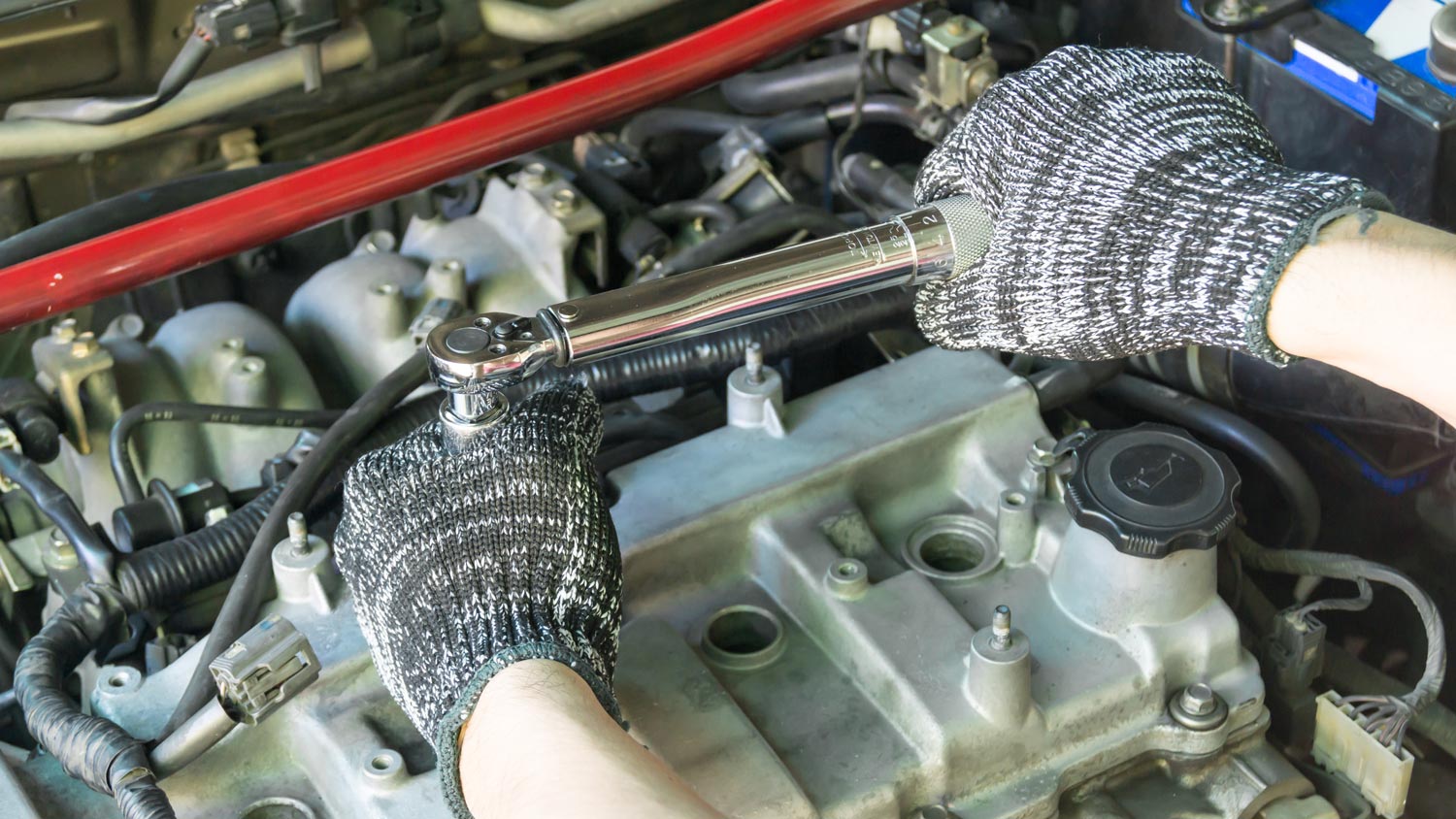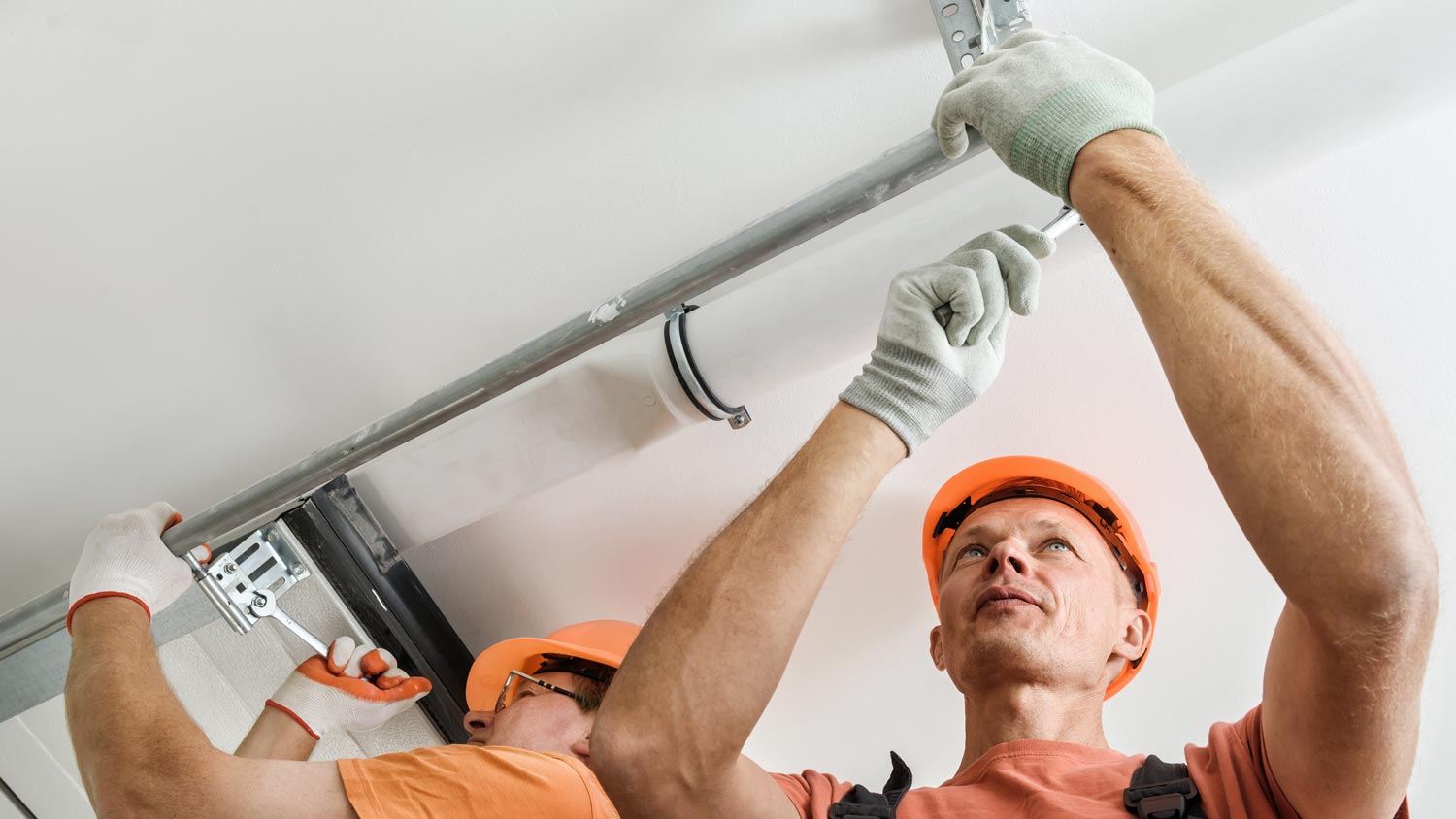
Looking to add a personal touch or some patriotic flair to your property? Learn about flagpole installation costs and how to budget appropriately.
Apply the perfect amount of torque to your fasteners


Perhaps an often overlooked tool in your kit, torque wrenches are perfect for tightening fasteners, especially when ratchets or larger wrenches are too bulky for the job. Torque wrenches are one-and-done tools; they do not over- or under-tighten your fasteners, so you never need to worry about damage to your machine. Whether you are tightening lug nuts, installing mini-splits, or securing plumbing fixtures, our guide will show you how to use a torque wrench precisely and accurately.

A torque wrench is a tool designed to tighten fasteners (pipe fittings, nuts, and bolts). You adjust the setting of the torque wrench, and the torque wrench stops when maximum force is achieved, so that the fitting is not over-tightened.
Torque wrenches are slim, making them ideal for hard-to-reach places. They are also helpful for ensuring that smaller fittings are installed correctly, such as a valve connected to one of your radiator pipes.
There are three main types of torque wrenches to choose from.
A dial torque wrench has a dial face on it that allows you to measure the torque of fasteners. This will help to ensure that you have tightened the fastener correctly. This is a common alternative to digital torque wrenches.
Digital torque wrenches have a digital display that helps you check the torque of your fasteners. These wrenches use sensors to take measurements. Some digital torque wrenches have handy features like data storage and built-in timers.
Click or adjustable torque wrenches are most useful when you need to set your wrench to a specific torque. Once you have set your wrench, you can use it over and over again to get consistent results.
Torque wrenches are popular for various specialties, including:
Automotive repairs, like tightening lug nuts
Machinery repairs in manufacturing and production facilities (e.g., farm and construction equipment)
HVAC repairs, such as mini-split installation and heat pump flare nut connections
Plumbing repairs, including plumbing pipes, pipe fittings, soil pipes, and couplings
Home repairs for lawn and garden equipment, such as lawn mowers
There is a good reason why torque wrenches can be found in the toolkits of handypersons, plumbers, automotive repair specialists, HVAC pros, and DIYers. If you can simply tighten a loose nut on your unit, you can save yourself the cost of hiring a pro, and you will likely prolong the life of your machine. Here is how to use your torque wrench.

You will need to know how to measure torque, which is the amount of force necessary to turn a fastener.
Bolts are measured in foot-pounds (ft./lbs.), inch-pounds (in./lbs.), and meter-kilograms (m-kg).
Measure from the center of the fastener. A foot-pound equals one pound of force applied on a lever one foot long.
You will calibrate your torque wrench’s force based on the manufacturer’s instructions.
Put on safety goggles or a face shield for protection.
Read the device’s instruction manual and identify the torque measurements by finding the hash (or gradation) marks.
The handle will have horizontal gradation marks for larger torque measurements and vertical marks for minor torque gradation measurements.
Grab the tightener at the end of the torque wrench handle (the tightener is usually a cap on the end of the wrench).
Twist the tightener counterclockwise to loosen it and change the settings.
Slide the handle up or down the wrench to reach your desired setting on the hash marks.
Identify two sets of measurements: one set of larger units (meter-kilograms) and one set of smaller digits (foot-pounds).
Turn the dial clockwise (to raise) or counterclockwise (to lower) the necessary torque settings.
Make any minor adjustments by twisting the dial lightly.
Lock the tightener back into place by twisting clockwise until it cannot twist any longer.
Pro tip: Calculate torque before beginning your project (in case any adjustments are needed). Add the larger number on the handle and the smaller number on the dial (including negative numbers) to get your total torque.

Place the correct socket onto the head of the torque wrench (sockets are typically interchangeable on most torque wrenches).
Grip the handle properly (do not use a handle extension).
Take your nut, bolt, or fastener and place it over the thread or the opening. Turn the fastener clockwise until it can no longer turn.
Place the torque wrench socket onto the nut, bolt, or fastener, ensuring the two pieces are flush.
Turn the handle clockwise to tighten the fastener.
Stop when you hear a click, beeping, buzzing, feel resistance, or when the wrench stops moving altogether. The clicking sound indicates that you have reached the correct torque level.
Set your torque wrench back to zero (ensuring not to use any negative numbers) when finished. Otherwise, you can throw off your wrench’s calibration over time.
Clean off nuts, bolts, and fasteners with a grease rag before using your torque wrench. If grime accumulates inside your wrench, it makes it more difficult for the socket to fit inside and properly tighten your fasteners.
Never use a torque wrench to loosen fasteners; stick to standard wrenches and ratchets.
Regularly calibrate your torque wrench (at least once a year or once every 5,000 cycles) by a torque wrench specialist or a handyperson near you.
If you drop your torque wrench, you will need to recalibrate it immediately to correct your measurements.
Place your torque wrench in a toolbox, storage case, tool belt, or on a rack after use.

DIYers with experience tightening fasteners can save between $40 to $150 per hour in labor costs (plumbing specialist and HVAC professional) if they purchase a torque wrench, apply the correct settings, and properly tighten a fitting.
But when it comes to using a torque wrench, precision is key. If you are unsure of how to use a torque wrench, we recommend hiring a pro. This way, you will know that the correct settings and force have been applied to your machine’s fasteners. Benefits of hiring a pro include:
You will not risk over-tightening or under-tightening your fasteners. (This can lead to damaged equipment, broken bolts, and stripped threads.)
Pros are knowledgeable and have experience using and setting torque wrenches.
Pros carry several types and sizes of torque wrenches, so the job is done correctly.
From average costs to expert advice, get all the answers you need to get your job done.

Looking to add a personal touch or some patriotic flair to your property? Learn about flagpole installation costs and how to budget appropriately.

Learn how much it costs to board up a window to buy yourself some time and maintain home security while you wait for the permanent repair.

Discover wheelchair ramp cost estimates, including installation, materials, and tips to save. Learn what impacts your price and how to budget for your project.

Installing fixtures into concrete can be complicated. Learn about different types of concrete anchors and how to choose the best one for your needs.

Learning how to read a tape measure properly is one of the first—and most important—steps on the road to being a great DIYer. Let's break it down.

If you're wondering who to hire to remove a basketball hoop, it's important to know that handypersons and professionals alike can haul it away.